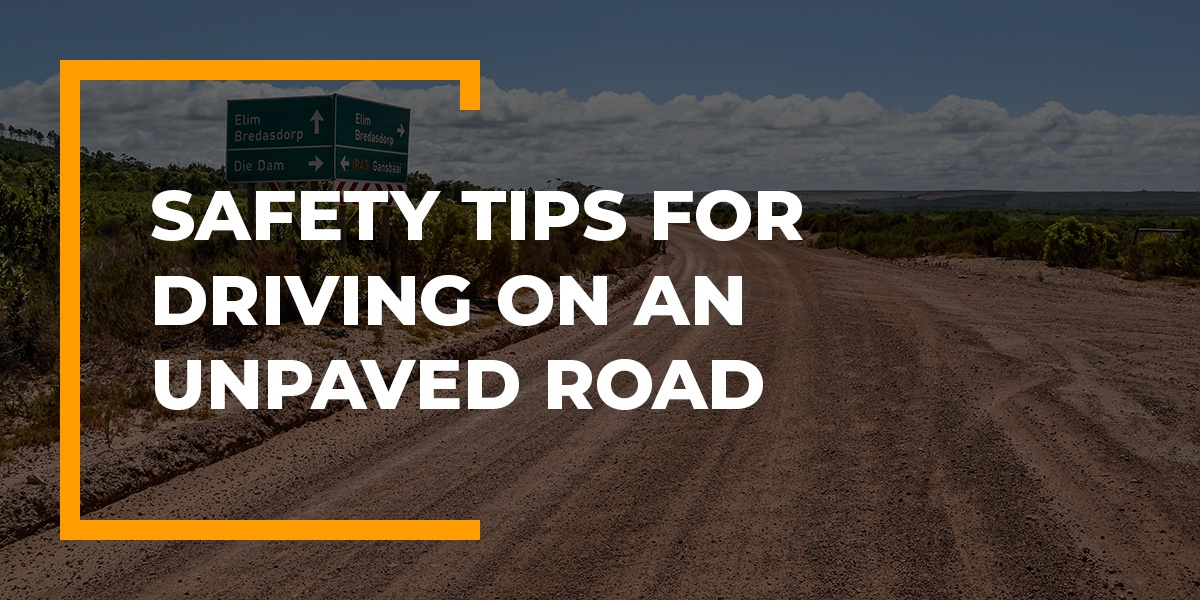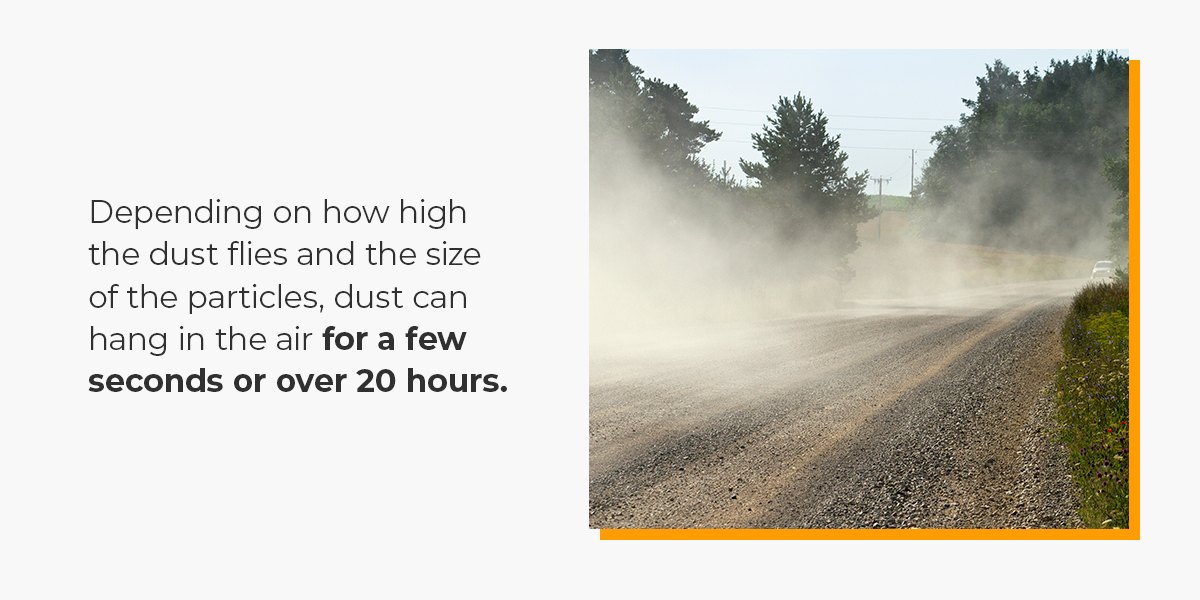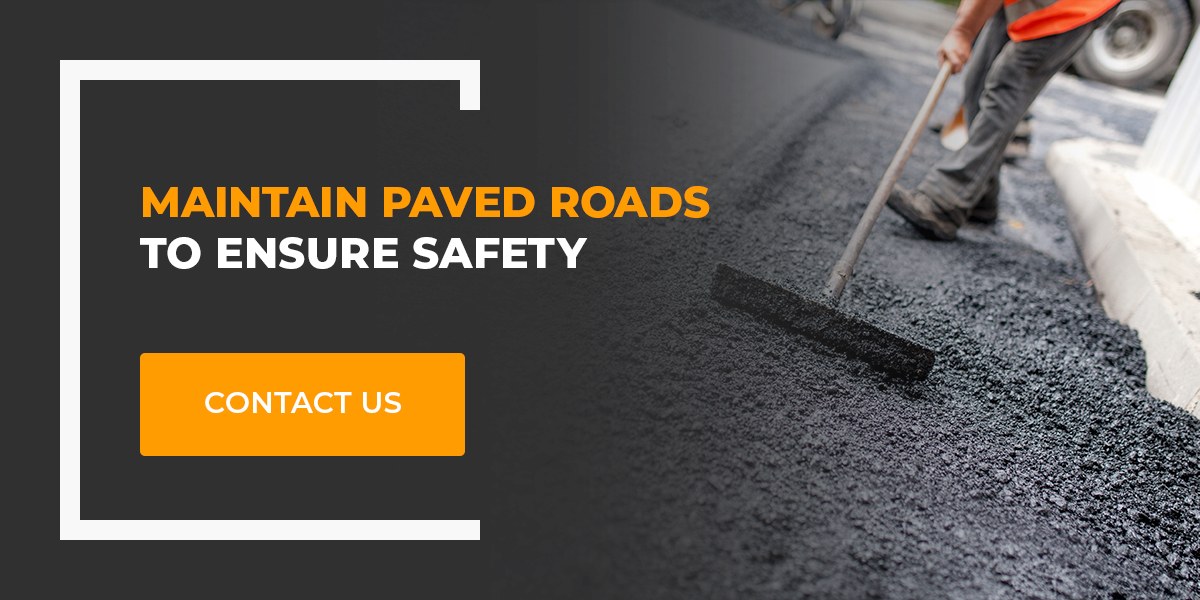Unpaved roads are common in rural areas around the country. In some cases, they’re unavoidable. Driving on an unpaved road is much different than driving on a paved road, which is why it’s essential to know how to adapt to drive safely. Accidents on unpaved roads are common due to the less-than-ideal driving conditions. We’ve compiled five tips to help prepare you for driving on unpaved roads, including slowing down, monitor weather conditions, look out for dangers of dust, watch for rocks and other flying objects and know when not to drive.
Unpaved Roads vs. Paved Roads
The most significant difference between unpaved roads and paved roads is what the road surface consists of. While each road is created with the same objective in mind — to get you from one place to another — the top layer of a road varies.
Dirt roads and gravel roads are examples of unpaved roads. A dirt road is the most basic form of road — it is simply made from the land it runs through, and no surface material is added. The composition of dirt roads can change depending on the area they pass through. For example, one dirt road may have sections that are sandy, rocky or bare dirt. Without a surface material, dirt roads are prone to becoming muddy, which makes driving nearly impossible at times.
Gravel roads are similar, although they’re surfaced with crushed stones, sand and fines. The fines, including silt or clay particles, act as a binder to help hold the stones in place.
An aggregate similar to the composition of a gravel road is used as the basis for a paved road. Paved roads are surfaced with materials like asphalt and cement. These surfaces are significantly more reliable and safer to drive on than unpaved roads. Although paved roads are the ideal option, in some cases, paving a road is not a viable option. Taking paving equipment to certain rural areas can be difficult, and in some areas, unaffordable.
Safety Tips for Driving on Unpaved Roads
About 35% of U.S. roads are unpaved, so consider the following tips for driving safely on unpaved roads.
1. Slow Down
The simplest thing you can do to drive safely on unpaved roads is slow down. Because unpaved roads lack the traction that paved roads offer, you are not able to stop your car as fast on unpaved roads. It’s much easier to skid and slip on an unpaved road, so accelerate and brake slowly. The road surface will also be uneven, so driving fast can jostle parts of your car loose and make for an uncomfortable ride.
Driving slow helps you watch for hazards like potholes, changes in the road, tight curves, oncoming traffic or wildlife attempting to cross the road. It may also protect your car from damage incurred in a bumpy ride.
2. Monitor Weather Conditions
Weather conditions can make all kinds of changes to the state of an unpaved road. Rain can quickly turn a dirt road into a mud pit or flood a gravel road and create ruts. Flooding can also change the shape of gravel and dirt roads or wash them out completely. Even if it’s not currently raining, damage from weather the day before can remain a hazard on unpaved roads for several days afterward.
Monitoring the weather conditions and being aware of how the weather can affect the unpaved roads you travel on is important for your safety. Taking a dirt road during a rainstorm can be a recipe for disaster. It’s a good idea to have a backup route and be aware of what your car can handle. Vehicles with four-wheel drive can handle conditions better than vehicles with rear-wheel drive.
3. Look out for the Dangers of Dust
Dust is a common hazard on unpaved roads, especially in dry conditions. There are many ways dust can get kicked up, obscuring your field of vision and the road ahead of you. As aggregate and stone deteriorate, they create dust naturally. As you drive over the surface, the weight of your vehicle and the pressure from the tires can grind particles to create more dust.
Wind and other traffic on the road can blow dust around, making it hard to see the road and the area surrounding it. Depending on how high the dust flies and the size of the particles, dust can hang in the air for a few seconds or over 20 hours. If you’re following another vehicle on a dusty road, slow down to create space between your vehicles. This can give the dust particles a chance to settle so you can see the road more clearly. It’s also a good idea to turn on your headlights so the driver in front of you can see your car through the dust cloud.
4. Look out for Rocks or Flying Objects
Maintaining an effective following distance is also helpful when it comes to watching for flying debris. When someone is driving in front of you, their tires can kick up larger stones and rocks that can break your windshield or headlights or cause other damage to the exterior of your vehicle. It’s also important to watch for larger rocks sticking out of the road because rocks can cause damage without another car kicking them up. Some rocks can be sharp or just huge. Either way, your car is not indestructible, and you should try to avoid rocks to the best of your ability.
5. Know When Not to Drive
Don’t drive when conditions are less than perfect unless it’s absolutely necessary. Be cautious when driving at dawn, dusk and night, as these are common times for wildlife to be out and about. The dark lighting at these times of day can make it difficult to see animals in and around the road. Watch for these kinds of hazards to drive safely on unpaved rural roads.
Maintain Paved Roads to Ensure Safety
Though paved roads offer improved safety over unpaved roads, they can quickly become unsafe without proper maintenance. Factors like traffic, moisture and weather can lead to the deterioration of asphalt. As asphalt deteriorates, it requires repairs and maintenance to remain safe to drive on.
Take action to repair asphalt now to prevent damage to vehicles and safety hazards in the future. If your commercial property needs asphalt maintenance, contact ToriTom Services for a free quote and to see what we can do for you.



